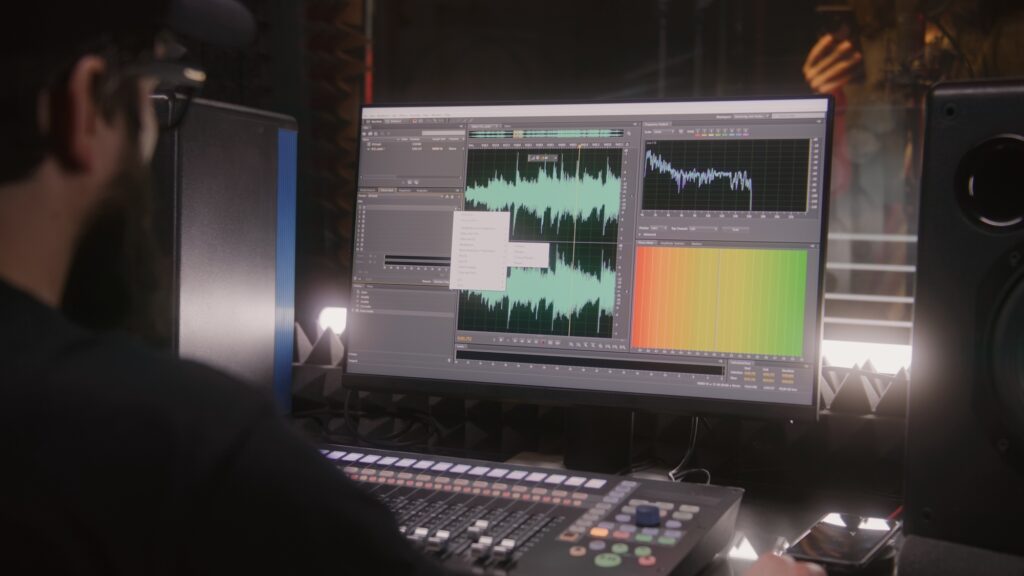In the world of audio production, the terms “mixing” and “mastering” are often used interchangeably, leading to confusion among those new to the field. Both are critical stages in the production process, but they serve distinct purposes and involve different techniques. With that being said, let’s try to demystify the differences between mixing vs mastering.
Mixing: Crafting the Sonic Landscape
What Is Mixing?
Mixing is the art of blending individual audio tracks into a cohesive and balanced sound. It’s like being the conductor of an orchestra, ensuring that each instrument plays harmoniously in the final composition.
Key Tasks in Mixing:
- Balancing Levels: Adjusting the volume levels of individual tracks to create a well-balanced mix. This includes setting the right balance between vocals, instruments, and other elements.
- Equalization (EQ): Shaping the tonal characteristics of each track. EQ is used to enhance or reduce specific frequencies, such as boosting the bass or making vocals sound brighter.
- Panning: Placing audio elements in the stereo field. For example, moving an electric guitar to the right and a keyboard to the left to create a sense of space.
- Effects and Processing: Applying various audio effects like reverb, delay, compression, and more to shape the sound.
- Automation: Adjusting parameters over time. For instance, gradually increasing the reverb on a vocal during a chorus.
Why Mixing Matters:
Mixing is crucial because it sets the foundation for the entire sound of the track. A well-mixed song will have clarity, depth, and a sense of space, making it enjoyable to listen to.

Mastering: The Final Polish
What Is Mastering?
Mastering is the last step in audio production. It involves preparing the final mix for distribution, ensuring that it sounds its best on various playback systems.
Key Tasks in Mastering:
- EQ and Dynamics Processing: Fine-tuning the overall tonal balance and controlling dynamics (compression and limiting) to achieve a cohesive and competitive sound.
- Sequencing: Arranging all of the tracks in the correct order for an album or playlist, adding pauses, crossfades, and ensuring smooth transitions.
- Loudness Optimization: Adjusting the overall loudness to meet industry standards while avoiding distortion.
- Format Conversion: Preparing the final audio for various formats like CD, vinyl, streaming platforms, and digital downloads.
- Quality Control: Careful listening and inspection to catch any issues or artifacts in the audio.
Why Mastering Matters:
Mastering ensures that the final audio product is consistent, polished, and ready for distribution. It also guarantees that the audio will sound great on different playback systems.
The Key Differences
Now, let’s break down the primary differences between mixing vs mastering:
1. Timing:
- Mixing: Occurs during the production phase, after recording and editing individual tracks but before the final mixdown.
- Mastering: Takes place after mixing, preparing the final mix for distribution.
2. Scope:
- Mixing: Involves individual track adjustments, creating the sonic balance within the song.
- Mastering: Focuses on the entire mix, ensuring consistency and preparing for distribution.
3. Tools and Equipment:
- Mixing: Uses tools like DAWs (Digital Audio Workstations), mixers, and plugins for track-level processing.
- Mastering: Involves specialized mastering software and hardware, as well as a dedicated mastering engineer.
4. Goal:
- Mixing: To create a balanced and engaging mix with clarity, depth, and a sense of space.
- Mastering: To prepare the final mix for distribution, ensuring it meets industry standards and sounds great on all playback systems.
5. Expertise:
- Mixing: Typically done by a mix engineer who specializes in crafting the sonic landscape of a song.
- Mastering: Performed by a mastering engineer with expertise in the final audio quality and format preparation.
6. Revisions:
- Mixing: Allows for more revisions since it’s an ongoing process.
- Mastering: Has limitations on revisions, as it’s a final polish stage.
In audio production, mixing and mastering are two distinct yet interconnected stages that play a pivotal role in delivering a high-quality final product. When we talk about mixing vs mastering, it’s important to know that mixing involves crafting the individual elements of a song into a cohesive and balanced mix, while mastering is the final polish that prepares the mix for distribution. Understanding the differences between these stages is crucial for achieving professional-sounding audio. So, whether you’re a musician, producer, or an audio enthusiast, knowing when to mix and when to master is essential for creating exceptional soundscapes that captivate listeners.
Leave a Comment
You must be logged in to post a comment.